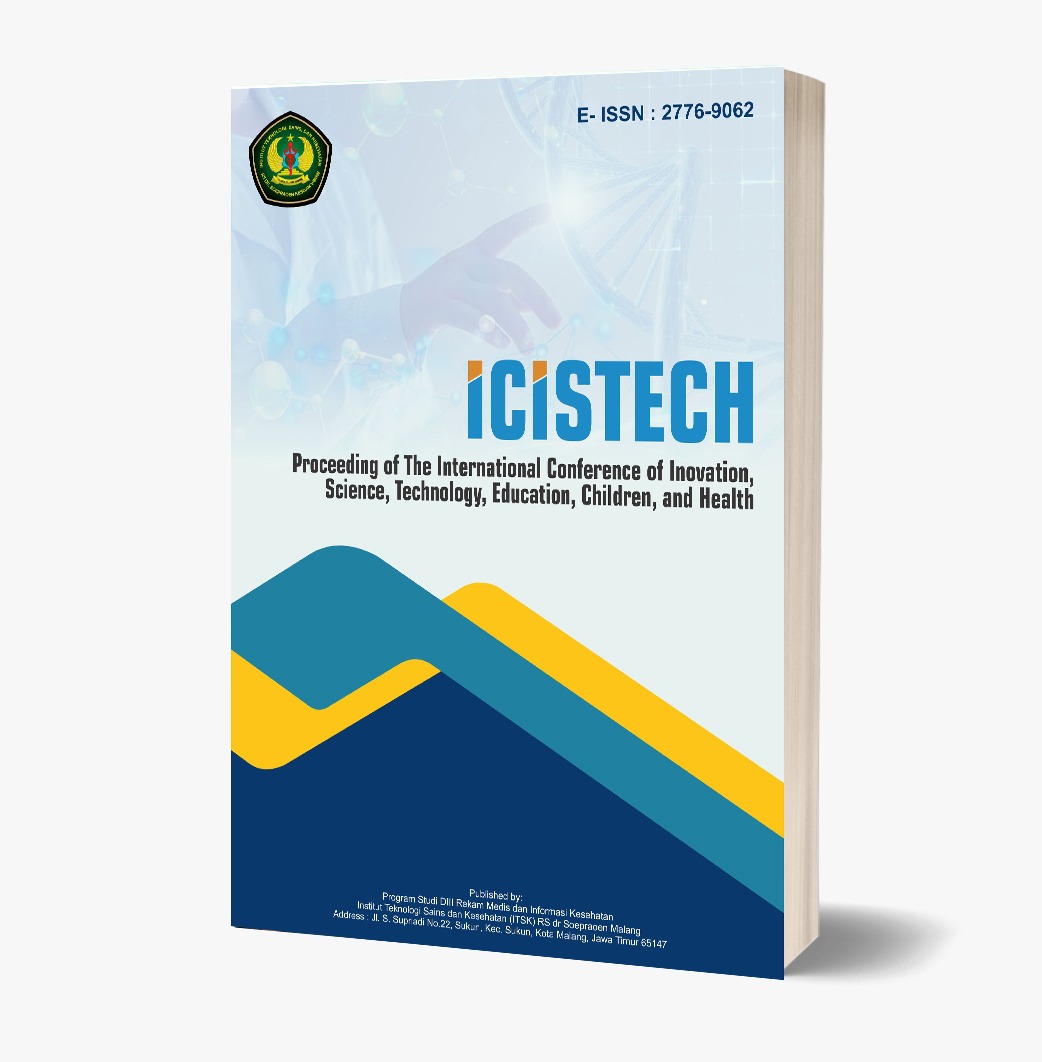Improving Speaking Skills through Online-Based Interactive Picture Media in Elementary Schools
DOI:
https://doi.org/10.62951/icistech.v2i1.23Keywords:
Ability to Present Information, Writing Stories, Interactive LearningAbstract
The COVID-19 pandemic has had an unfavorable impact on all aspects of life, including aspects of health, economy, tourism, social and education. Students can also use learning support applications such as study houses, teacher rooms, thinglink, netboard, oodlu, quizwhizzer and other applications. In fact, not all students will be successful in online learning. This research aims to improve speaking skills through the application of online-based interactive picture media to 5th graders at SD Negeri 2 Blitaran, Nganjuk Regency. This research is a classroom action research with the research design determined are planning, implementation, observation and reflection. There are two data obtained, namely process data and result data. Process data obtained from teacher activity data and student activities in applying online-based interactive image media. Result data obtained from student learning outcomes data in the form of students' speaking skill scores through the application of online-based interactive image media. The research subjects were 31 fifth grade students at SD Negeri 2 Blitaran, Nganjuk Regency, for the 2020/2021 academic year. The results showed that the teacher's activities continued to increase starting from the pre-action cycle II. In the pre-action, the average score of students was only 63.1 with a very poor category. After taking action in cycle 1 at meeting 1, the average score of students increased to 80%. The percentage of 80% indicates that there are still activities that have not been carried out at meeting 1. The action is continued in the second friendship, where the ability of students has reached 87%. With this percentage, improvements need to be made in cycle II. The teacher must review the steps in the lesson plans that have been prepared so that learning can run according to the plan. In Cycle II meeting 1, the percentage of success was 92.8%. The thing that must be maintained in cycle II is that the teacher carries out learning according to the steps that have been planned and provides explanations to students regarding important things that must be considered when retelling a reading. The action was continued in Cycle II meeting 2 where the student success achieved reached 95.7%. This happens because the teacher carries out learning in accordance with the planned RPP based on the results of the cycle reflection. Teachers should emphasize
References
Ahmad, A. (2017). Application of language games (Catharsis) to improve reading skills of Iva elementary school students
State 01 Metro Center. EduHumanities| Cibiru Campus Basic Education Journal, 9(2), 75-83.
Azhar Arsyad. 2014. Learning Media. Jakarta: PT. King Grafindo Persada.
Barcroft, J., & Jarnefeldt, E. (2015). Google and ThingLink and Memes, Oh My!: The Intersection of Images and Information Literacy in College Learning.
Djalante, R., Lassa, J., Setiamarga, D., Sudjatma, A., Indrawan, M., Haryanto, B., ... & Warsilah, H. (2020). Reviews and analysis of current responses to COVID-19 in Indonesia: Period of January to March 2020. Progress in Disaster Science, 6, 100091.
Docett, S., & Perry, B. (2004). What makes a successful transition to school? Views of Australian parents and teachers. International journal of early years education, 12(3), 217-230.
Dong, C., Cao, S., & Li, H. (2020). Young children's online learning during COVID-19 pandemic: Chinese parents' beliefs and attitudes. Children and youth services review, 118, 105440
Faridy, DV, Untari, E., & Mudiono, A. (2019). Development of Interactive CD Learning Media Animal Life Cycle in Grade IV SD. Wahana Elementary School, 27(1), 10-17.
Febriatmoko, A. (2018). IMPROVING STUDENT'S SPEAKING ABILITY THROUGH STORY TECHNIQUES CHAIN IN CLASS IV SD NEGERI RINGIN REJO 03 SUB-DISTRICT WATES, BLITAR REGENCY (Doctoral dissertation, University of Muhammadiyah Malang).
Fung*, YY (2004). Collaborative online learning: Interaction patterns and limiting factors. Open Learning: The Journal of Open, Distance and e-Learning, 19(2), 135-149.
Hanifah, N. (2014). Understanding classroom action research: theory and application. UPI Press.
Hilgard, ER, & Bower, GH (1966). Theories of learning.
Karalis, T. (2020). Planning and evaluation during educational disruption: Lessons learned from Covid-19 pandemic for treatment of emergencies in education. European Journal of Education Studies.
Kemmis, S., McTaggart, R., & Nixon, R. (2013). The action research planner: Doing critical participatory action research. Springer Science & Business Media.
Mitchell, C., Cours Anderson, K., Laverie, D., & Hass, A. (2021). DISTANCE BE DAMNED: THE IMPORTANCE OF SOCIAL PRESENCE IN A PANDEMIC CONSTRAINED ENVIRONMENT. Marketing Education Review, 1-17.
Putra, AP, Nawawi, I., Badawi, A., Pratiwi, I., Kim, J., Untari, E., & Umaroh, M. (2019, October). Interactive Multimedia Analysis in Thematic Learning: A Study of Practical Aspects. In 2019 5th International Conference on Education and Technology (ICET) (pp. 61-65). IEEE.
Putra, P., Liriwati, FY, Tahrim, T., Syafrudin, S., & Aslan, A. (2020). The students learning from home experiences during Covid-19 school closures policy in Indonesia. Journal of Iqra': Study of Educational Sciences, 5(2), 30-42
Sharan, S., & Tan, IGC (2008). Organizing schools for productive learning (pp. 1-117). New York: Springer.
Tran, BX, Nguyen, HT, Le, HT, Latkin, CA, Pham, HQ, Vu, LG, ... & Ho, RC (2020). Impact of COVID-19 on economic well-being and quality of life of the Vietnamese during the National social distancing. Frontiers in psychology, 11.
Utomo, MNY, Sudayanto, M., & Saddhono, K. (2020). Tools and strategies for distance learning to respond to COVID-19 pandemic in Indonesia. Ingénierie des Systèmes d'Information, 25(3), 383-390.
Downloads
Published
How to Cite
Issue
Section
License
Copyright (c) 2022 Proceeding of The International Conference of Inovation, Science, Technology, Education, Children, and Health

This work is licensed under a Creative Commons Attribution-ShareAlike 4.0 International License.













